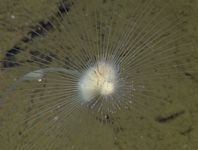Abstract
Kocourekia fusis Cao & Zhu sp. n. (Hymenoptera, Eulophidae) is described and illustrated as a parasitoid of aculeate Hymenoptera. Females differ from those of the other two species in Kocourekia by the presence of a malar sulcus, prompting a re-examination of generic limits. A re-definition of Kocourekia is presented, its relationship with other closely allied genera in the Melittobia complex is discussed, and a key to the species of Kocourekia is provided.
References
Bosch, H.A.J. & Assem J. (1986) The taxonomic position of Aceratoneuromyia granulans Domenichini (Hymenoptera: Eulophidae) as judged by characteristics of its courtship behaviour. Systematic Entomology, 11 (1), 19–23.
https://doi.org/10.1111/j.1365-3113.1986.tb00158.xBouček, Z. (1966) Descriptions of three new reared Eulophidae (Hymenoptera) from Europe and Africa. Acta Entomologica Bohemoslovaca, 63, 373–379.
Bouček, Z. (1977) Descriptions of Tachinobia gen. n. and three new species of Tetrastichinae (Hymenoptera: Eulophidae), with a tentative key to genera. Bulletin of Entomological Research, 67 (1), 17–30.
https://doi.org/10.1017/s0007485300010853Bouček, Z. (1988) Australasian Chalcidoidea (Hymenoptera). A biosystematic revision of genera of fourteen families, with a reclassification of species. C.A.B. International Institute of Entomology, Wallingford, 832 pp.
Dahms, E.D. (1984) Revision of the genus Melittobia (Chalcidoidea: Eulophidae) with the description of seven new species. Memoirs of the Queensland Museum, 21, 271–336.
Gauthier, N., LaSalle, J., Quicke, D.L.J. & Godfray, H.C.J. (2000) Phylogeny of Eulophidae (Hymenoptera, Chalcidoidea), with a reclassification of Eulophinae and the recognition that Elasmidae are derived eulophids. Systematic Entomology, 25, 521–539.
https://doi.org/10.1046/j.1365-3113.2000.00134.xGibson, G.A.P. (1997) Morphology and terminology. In: Gibson, G.A.P., Huber, J.T. & Woolley, J.B. (Eds.), Annotated keys to the genera of Nearctic Chalcidoidea (Hymenoptera). National Research Council Research Press, Ottawa, Ontario, pp. 279–284.
Graham, M.D.V. (1987) A reclassification of the European Tetrastichinae (Hymenoptera: Eulophidae), with a revision of certain genera. Bulletin of the British Museum (Natural History), Entomology Series, 55 (1), 1–392.
Graham, M.D.V. (1991) A reclassification of the European Tetrastichinae (Hymenoptera: Eulophidae): revision of the remaining genera. Memoirs of the American Entomological Institute, 49, 1–322.
LaSalle, J. (1994) North American genera of Tetrastichinae (Hymenoptera: Eulophidae). Journal of Natural History, 28 (1), 109–236.
https://doi.org/10.1080/00222939400770091LaSalle, J. & Boler, I. (1994) Hadranellus anomalus n. gen. et n. sp. (Hymenoptera: Eulophidae): an example of extreme intraspecific variation in an endemic New Zealand insect. New Zealand Entomologist, 17 (1), 37–46.
https://doi.org/10.1080/00779962.1994.9721983Noyes, J. (2017) Universal Chalcidoidea Database. Worldwide Web electronic publication. Available from: http://www.nhm.ac.uk/chalcidoids (accessed 7 May 2017)
Ratzeburg, J.T.C. (1852) Die Ichneumonen der Forstinsekten in entomologischer und forstlicher Beziehung, 3. Nicolai'schen Buchhandlung, Berlin, v–xviii + 272 pp., 3 tables.
Staab, M., Bruelheide, H., Durka, W., Michalski, S., Purschke, O., Zhu, C.D. & Klein, A. M. (2016) Tree phylogenetic diversity promotes host-parasitoid interactions. Proceedings of the Royal Society B, The Royal Society, 283 (1834), 20160275.
https://doi.org/10.1098/rspb.2016.0275Tscharntke, T., Gathmann, A. & Steffan-Dewenter I. (1998) Bioindication using trap-nesting bees and wasps and their natural enemies: community structure and interactions. Journal of Applied Ecology, 35 (5), 708–719.
https://doi.org/10.1046/j.1365-2664.1998.355343.x

